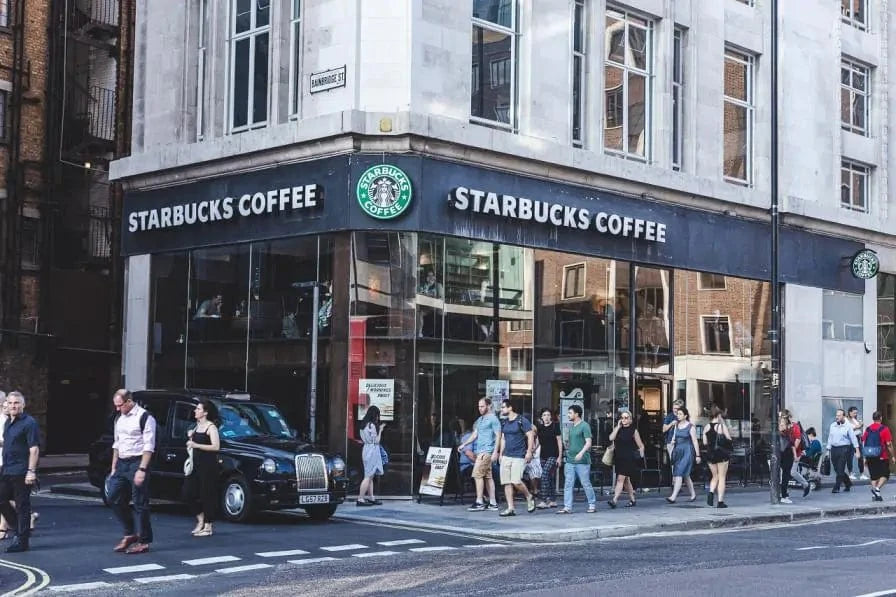Your basket is currently empty.
Shop NowGreen Champions - Starbucks

Green Champions
Starbucks
There’s an increasing need for businesses to be seen to be environmentally responsible. It not only makes for good PR, it makes good business sense if companies are reducing the cost of managing and disposing of waste, and keeping their energy costs down.
The need to cut down on single-use items such as disposable coffee cups has led to companies like Starbucks introducing campaigns to encourage customers to recycle their cups. As our love affair with coffee shows no signs of coming to an end, this has been a good move.
But it turns out that Starbucks are leaders, not followers, when it comes to being green.
Why is the company environmentally responsible?
The company ethos is that it is important to care for the planet and they want to encourage others to do the same. As they rely on an agricultural product for their business (coffee beans), it makes sense to take steps to care for the planet.
How are they environmentally responsible?
Reducing waste
Starbucks manage the amount of waste they produce by reusing it and recycling where possible. They have reduced the amount of material in their hot and cold drinks cups by 11% and 5% respectively, and this saves the equivalent material that would go into 700,000 paper cups, every single month. They have also introduced a new sleeve for hot drinks which uses less material, and this saves 3 million sleeves per month. The cold drinks cups are made from 50% recycled material and are completely recyclable.
Reusing cups
Starbucks are one of many companies working on a solution to tackle the problem of paper cup waste. They offer discounts to customers who bring in their reusable cups, which works out at 25p per drink. There are reusable cups available to purchase in store, starting from £1.
Recycling
Paper cups are a small part of the waste the company produces. A massive 90% of the waste they produced is recycled, or converted into energy. Organic waste, dry waste, cardboard, general waste, milk cartons and aluminium is sorted then recycled.

Saving energy
80% of Starbucks’ carbon footprint comes from energy they use in their stores in the course of their operations. They recognise that there is the potential to look at ways to minimise energy consumption in their stores. All stores in Europe are now designed to LEED (Leadership in Energy and Environmental Design) standards which encourages greener construction. As well as this, the company has carried out energy audits to see where stores can use more efficient lighting, heating, and ventilation systems. They are also committed to investing in renewable energy sources. In 2015, the company signed up to an initiative called RE100, which is a global campaign to encourage and support influential companies to working towards using 100% renewable energy in their operations.
Starbucks supports the development of wind and solar farms, and they have renewable electricity contracts set up in the UK, France, and Germany.
Water
For Starbucks, water is obviously an essential resource. As well as using a lot of water to make drinks, the company uses water to run their dishwashers and ice machines, so they are always looking for ways to use water more responsibly.
Since 2008, the company has reduced water consumption by 23% by monitoring consumption in stores, repairing leaks, and making fixtures more efficient. They have installed water saving technology, including dishwashers that use a high-pressure spray to clean dishes faster and using less water than a constant flow of water. The espresso machines also use less water when rinsing the glasses.
Green building
The company are creating sustainable stores, right from the design, through to construction and operations. The ‘green’ stores started in the US and now the company is expanding the number across the globe. The aim is to continue to expand the company but with a minimal impact on the environment, and a commitment to sustainability. Stores are built with sustainable materials and are installed with energy and water saving measures. Some of the features that the stores have include energy efficient appliances, recycled floor tiles and wood products, temperature controls and valves that minimise water wastage.

Tackling climate change on a wider scale
Climate change directly affects the company, because they import their coffee beans and other ingredients from farmers.
Starbucks has been putting a climate change strategy in place since 2004. As well as recycling and reusing materials, building sustainable stores, and conserving energy and water, they work with international conservation organisations to ensure that farming practices are sustainable and that their coffee-buying guidelines are ethical and don’t exploit farmers and communities.


